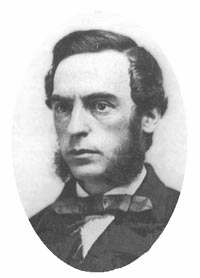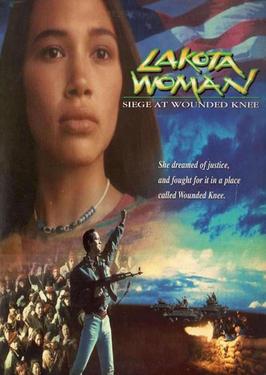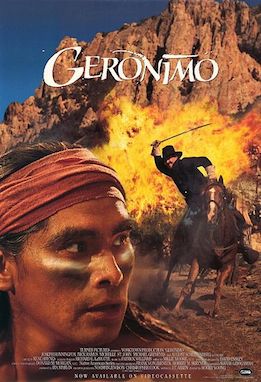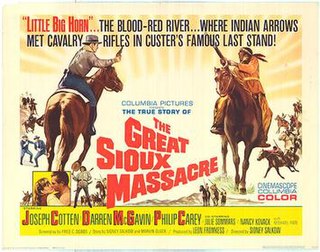Related Research Articles

The Lakota are a Native American people. Also known as the Teton Sioux, they are one of the three prominent subcultures of the Sioux people, with the Eastern Dakota (Santee) and Western Dakota (Wičhíyena). Their current lands are in North and South Dakota. They speak Lakȟótiyapi—the Lakota language, the westernmost of three closely related languages that belong to the Siouan language family.

The Battle of the Little Bighorn, known to the Lakota and other Plains Indians as the Battle of the Greasy Grass, and commonly referred to as Custer's Last Stand, was an armed engagement between combined forces of the Lakota Sioux, Northern Cheyenne, and Arapaho tribes and the 7th Cavalry Regiment of the United States Army. The battle, which resulted in the defeat of U.S. forces, was the most significant action of the Great Sioux War of 1876. It took place on June 25–26, 1876, along the Little Bighorn River in the Crow Indian Reservation in southeastern Montana Territory.

Sitting Bull was a Hunkpapa Lakota leader who led his people during years of resistance against United States government policies. Sitting Bull was killed by Indian agency police on the Standing Rock Indian Reservation during an attempt to arrest him at a time when authorities feared that he would join the Ghost Dance movement.

Crazy Horse was a Lakota war leader of the Oglala band in the 19th century. He took up arms against the United States federal government to fight against encroachment by White American settlers on Native American territory and to preserve the traditional way of life of the Lakota people. His participation in several famous battles of the Black Hills War on the northern Great Plains, among them the Fetterman Fight in 1866, in which he acted as a decoy, and the Battle of the Little Bighorn in 1876, in which he led a war party to victory, earned him great respect from both his enemies and his own people.

Into the West is a 2005 miniseries produced by Steven Spielberg and DreamWorks, with six two-hour episodes. The series was first broadcast in the U.S. on Turner Network Television (TNT) on six Fridays starting on June 10, 2005. It was also shown in the UK on BBC2 and BBC HD from November 4, 2006, and in Canada on CBC Television. The series also aired in the U.S. on AMC during the summer (June/July) and fall of 2012.

Gordon Tootoosis, was a First Nations actor of Cree and Stoney descent. Tootoosis was a descendant of Yellow Mud Blanket, brother of the famous Cree leader Pîhtokahanapiwiyin. He was acclaimed for his commitment to preserving his culture and to telling his people's stories. He once said, "Leadership is about submission to duty, not elevation to power." He served as a founding member of the board of directors of the Saskatchewan Native Theatre Company. Tootoosis offered encouragement, support and training to aspiring Aboriginal actors. He served as a leading Cree activist both as a social worker and as a band chief. In Open Season and Boog and Elliot's Midnight Bun Run, Tootoosis was the voice of Sheriff Gordy.
August Werner Schellenberg was a Canadian actor. He played Randolph in the first three installments of the Free Willy film series (1993–1997) as well as characters in Black Robe (1991), The New World (2005), and dozens of other films and television shows.

American Horse was an Oglala Lakota warrior chief renowned for courage and honor. American Horse is notable in American history as one of the principal war chiefs allied with Crazy Horse during Red Cloud's War (1866–1868) and the Battle of the Little Bighorn during the Great Sioux War of 1876–1877. Chief American Horse was a son of Old Chief Smoke, an Oglala Lakota head chief and one of the last great Shirt Wearers, a highly prestigious Lakota warrior society. He was a signatory to the Fort Laramie Treaty of 1868, along with his brothers Chief Red Cloud and Chief Blue Horse. A month or so after the Treaty, American Horse was chosen a "Ogle Tanka Un" along with Crazy Horse, Young-Man-Afraid-of-His-Horses and Man That Owns a Sword. On September 9, 1876, American Horse was mortally wounded in the Battle of Slim Buttes fighting to protect his family and defending against the white invasion of the "Paha Sapa" Black Hills.
George Armstrong Custer (1839–1876) was a United States Army cavalry commander in the American Civil War and the Indian Wars. He was defeated and killed by the Lakota, Northern Cheyenne, and Arapaho tribes at the Battle of the Little Bighorn. More than 30 movies and countless television shows have featured him as a character. He was portrayed by future U.S. president, Ronald Reagan in Santa Fe Trail (1940), as well as by Errol Flynn in They Died With Their Boots On (1941).

Marcus Henry Kellogg was a newspaper reporter killed at the Battle of the Little Bighorn. Kellogg rode with George Armstrong Custer during the battle. His dispatches were the only press coverage of Custer and his men in the days leading up to the battle. As a newspaper stringer whose reports were picked up around the country, Kellogg is considered the first Associated Press correspondent to die in the line of duty.

Bury My Heart at Wounded Knee is a 2007 American Western historical drama television film adapted from the 1970 book of the same name by Dee Brown. The film was written by Daniel Giat, directed by Yves Simoneau and produced by HBO Films.
Dreamkeeper is a 2003 film written by John Fusco and directed by Steve Barron. The main plot of the film is the conflict between a Lakota elder and storyteller named Pete Chasing Horse and his Lakota grandson, Shane Chasing Horse.

Lakota Woman: Siege at Wounded Knee is a 1994 TNT film starring Irene Bedard, Tantoo Cardinal, Pato Hoffmann, Joseph Runningfox, Lawrence Bayne, and Michael Horse and August Schellenberg. The film is based on Mary Crow Dog's autobiography Lakota Woman, wherein she accounts her troubled youth, involvement with the American Indian Movement, and relationship with Lakota medicine man and activist Leonard Crow Dog. The film is notable for being the first American film to feature an indigenous Native American actress in the starring role. Lakota Woman is also the third overall and first sound film with an entirely indigenous cast after In the Land of the Head Hunters and Daughter of Dawn.

The Great Sioux War of 1876, also known as the Black Hills War, was a series of battles and negotiations that occurred in 1876 and 1877 in an alliance of Lakota Sioux and Northern Cheyenne against the United States. The cause of the war was the desire of the US government to obtain ownership of the Black Hills. Gold had been discovered in the Black Hills, settlers began to encroach onto Native American lands, and the Sioux and the Cheyenne refused to cede ownership. Traditionally, American military and historians place the Lakota at the center of the story, especially because of their numbers, but some Native Americans believe the Cheyenne were the primary target of the American campaign.

Frank Benjamin Grouard was a Scout and interpreter for General George Crook during the American Indian War of 1876. For the better part of a decade he lived with the Sioux tribe before returning to society. He was General Crook's lead scout at the Battle of the Rosebud participated in the Slim Buttes Fight, Battle of Red Fork, helped to assess the immediate aftermath of the Battle of the Little Bighorn, and participated in the Wounded Knee Massacre.

Geronimo is a 1993 American historical Western television film directed by Roger Young and starring Joseph Runningfox in the title role. It also stars Jimmy Herman and Adan Sanchez, and was distributed by TNT on December 5, 1993.

Flying Hawk, also known as Moses Flying Hawk, was an Oglala Lakota warrior, historian, educator and philosopher. Flying Hawk's life chronicles the history of the Oglala Lakota people through the 19th and early 20th centuries, as he fought to deflect the worst effects of white rule; educate his people and preserve sacred Oglala Lakota land and heritage.

The Great Sioux Massacre is a 1965 American Western war film directed by Sidney Salkow in CinemaScope using extensive action sequences from Salkow's 1954 Sitting Bull. In a fictionalized form, it depicts Custer's descent from a defender of the Indians from Federal interference to an incompetent warmonger, and the Indians as his victims, and covers events leading up to the Battle of the Little Bighorn and Custer's Last Stand.